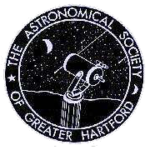Scheduled time for Public Observing: 9pm – 11pm
Please note the time change, Daylight Saving Time began March 11.
Solar System Objects:
The Moon: will be 55° high in the WSW at 10pm, and 55% illuminated (First Quarter phase, 7.8 days old). The major maria or “seas” are labeled on the image below. The Apollo 15 landing site is on the edge of Mare Imbrium, but anything left behind is far too small to be seen in any telescope. It has been imaged by the Lunar Reconnaissance Orbiter, however, click here to see the picture. It was the first mission to use the Lunar Rover.

Image copyright (c) Virtual Moon Atlas / http://ap-i.net/avl/en/start
The lunar Apennine mountains run along the edge of Mare Imbrium, near the landing site.
Planets: there will not be any planets visible tonight.
Deep-Sky Objects:
Nebula and Star Clusters: The visibility of deep-sky objects is limited by the brightness of the moon and light pollution in Middletown. There are a few open clusters (M35, 36, 37, and 38), and a planetary nebula (NGC 2392, the Eskimo Nebula) that normally would be worth observing, but they will be quite close to the moon and therefore nearly invisible.
Double Stars: Are not affected as much by light pollution. A couple of the brightest this time of year are Castor in Gemini and Gamma Leonis.
Man-made Objects:
International Space Station (ISS): Before the start of tonight’s observing session, at 8:58pm, the ISS will pass very nearly straight overhead, and will be very bright, about the same brightness as the planet Venus. It will be moving SW to NE, but will also disappear into the Earth’s shadow when nearly overhead, so start looking to the SW a couple of minutes earlier, at 8:55.
Iridium Satellites: These satellites can produce bright flares (brighter than Venus) from their antenna arrays. (Update: there will not be any visible flares during tonight’s observing session.)
